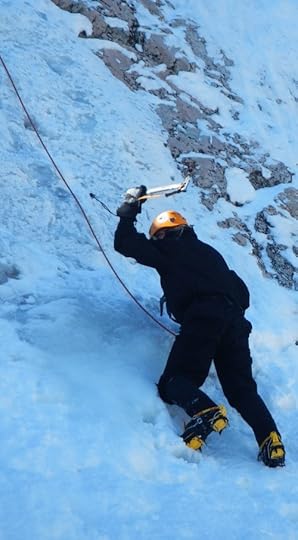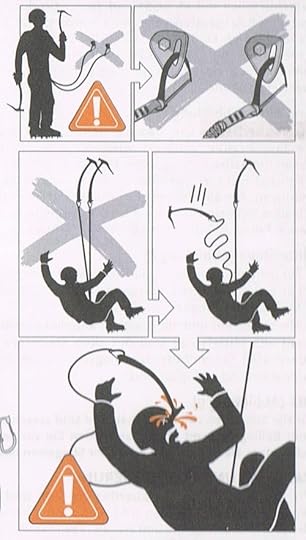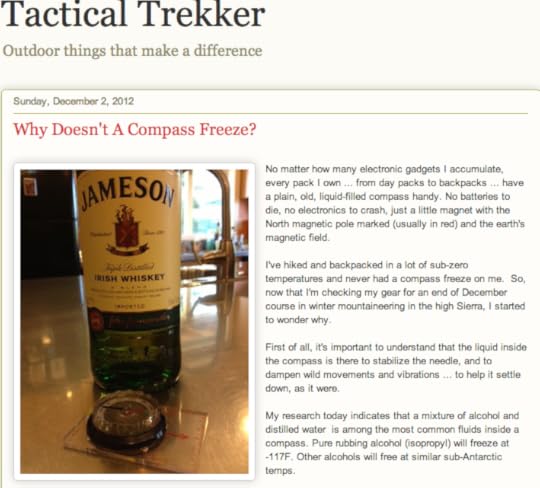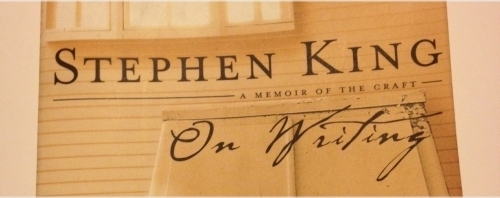Lewis Perdue's Blog, page 11
January 25, 2013
New vets showing Gulf War Illness: Well DUH!
From the Jan 24, 2013 issue of USA Today:
“WASHINGTON — Veterans of the wars in Iraq and Afghanistan may be suffering from the 20-year-old set of symptoms known as Gulf War Illness, according to a new report released Wednesday by the federal Institute of Medicine.
” ‘Preliminary data suggest that (chronic multisymptom illness) is occurring in veterans of the Iraq and Afghanistan wars as well,’ the report says.
“This may be the first time that the symptoms suffered by veterans of the 1991 Gulf War have been linked to veterans of the current wars, which started in 2001 and 2003, said Paul Rieckhoff, CEO of Iraq and Afghanistan Veterans of America.”
SECRET DRUG TESTS ONE CAUSE?
I say “well duh!” because my book, Perfect Killer, is wrapped around a well-researched, investigative core of non-fiction that indicates that at least one of the forms of Gulf War syndrome may come from secret tests of drugs on military personnel designed to turn them into perfect killers by removing any anxiety over killing.
GOVERNMENT DOCUMENTS CONFIRM PROGRAM EXISTENCE
These government documents from the Walter Reed Army Institute of Research, obtained via the Freedom of Information Act, confirm that the program existed.
TOP EXPERT BELIEVES SECRET TESTS RESPONSIBLE
Dr. Richard Gabriel — professor at the U.S. Army War College, a retired Army Colonel and former intelligence officer, the author of more than 30 books and former consultant to the Department of Combat Psychiatry at Walter Reed Army Medical Center — believes there are indications that such a drug may have been tested on some American troops in the First Gulf War and could be responsible for a variation of Gulf War Syndrome.
Dr. Gabriel told me that after he exposed the program at Walter Reed, they aid they had ended the program, but in reality probably went underground.
GULF WAR ILLNESS NOT SURPRISING IN NEW VETS
So, if secret drug tests are partly responsible, it’s not at all surprising that Gulf War illnesses would be cropping up in Afghanistan and Iraq.
You may want to read Dr. Richard Gabriel’s Afterword that he wrote for Perfect Killer.
January 5, 2013
Ice Climbing: How To Die. How Not To.

In all my thrillers, I try to make things as authentic and real by personally doing what my characters do — within the realm of ethics, legality and personal ability.
While the act of using a weapon or engaging in particular activities can be demanding, the process makes it easier in the long run to describe how a character would feel and to know what descriptions are accurate.
Obviously, I can’t put everything about every experience into a book, and so in the past, a lot has been left on the cutting room floor as it were.
So, last year I started a site:
Tactical Trekker: Do It Right. Don’t Die.(http://tacticaltrekker.com)
Tactical Trekker includes the out-takes from the activities that get used for book research. I intend to use the lessons and experience from creating and building Wine Industry Insight (http://wineindustryinsight.com) into a profitable digital publication that’s now almost three times larger than the number two premium wine industry online operation.
The following is a post from this morning’s Tactical Trekker. I’ll occasionally cross-post items.
Please let me know what you think of this effort.
Ice Climbing: How To Die. How Not To.
When avalanche conditions turned us back from summiting the 12,300-foot California Matterhorn right before New Years, we snowshoed back down the mountain and went ice climbing up an 80-foot frozen waterfall west of June Lake. The waterfall, like the mountain we had left, was blanketed in fresh powder.
Being new to this, I made all the usual mistakes and floundered up the ice face, especially as I lost one foothold after another before learned the secure how to kick the crampons into the ice face.
But the photo, above, (taken by fellow climber Jeffrey Addison) managed to catch me at an odd moment actually doing something right. My right foot is kicked into the ice and roughly horizontal. But my left foot is slanted up: a newbie error and one that can fatigue calves very quickly on a long climb.
Even though I lost footholds frequently, having four points of attachment to the ice (two axes and two crampons) reassured me, even on those early learning times when both footholds failed. Rule is always have three attachment points at all times. Don’t get in a hurry and try to move more.
Tethers/lanyards are a safety balancing act. In the photo above, my left hand is swinging the ice axe with a lanyard running from the head of the axe and tight to my wrist.
On the one hand, a lanyard can prevent loss of the axe if you drop it. And prevents it from becoming a deadly missile for climbers below. On the other hand tethers can become instruments of self-multilation if they swing wildly during a slip or a fall.

Kudos to Black Diamond Equipment for the graphic illustration above which comes from an equipment brochure.
It leaves little to the imagination about what what could happen if you attach their gear incorrectly. Visualizing this helped me maintain an iron grip on both my ice axes.
Double kudos to California Alpine Guides and its owner, Dave Miller for the great training on the ice and on the mountain.
December 28, 2012
More Than Gun Control Needed To Curb Gun Violence
TODAY’S NEWS, ITEM ONE: For second time in month, man pushed to death in New York subway
TODAY’S NEWS, ITEM TWO: Suspect in homeless woman’s burning is mentally ill, police say
Sick people do sick things. They can do them with a car, a can of gasoline, knives, poison and guns.
The coming emotional debate over gun control needs to address the issue of why mass shootings and the sorts of evil killings in then news links, above, seem to be happening more and more than ever before.
If we do not focus on what is making American society mentally ill, then the gun control debate will never produce anything but Band-Aid legislation and feel-good symbolism that fail to address the core issues.
Mental health should be at the top of the list. The single biggest way to reduce gun deaths is to keep guns out of the hands of the mentally ill.
The second way is strict enforcement of laws regarding gun owner security.
Authorities should prosecute gun owners who have left their weapons unsecured so that they can be stolen or used by unauthorized people. At the very least, felony charges of reckless endangerment can be brought against those who leave guns unsecured.
Defense against these charges is proof that a lock was cut or a gun cabinet broken into. There is no defense against an unsecured firearm that is taken and used in a crime, suicide or “accidental” death.
There are damn few firearms “accidents.” Locked guns and proper firearms training and handling prevent such things.
Training and gun security put responsibility at the top of the list for those who are not mentally ill.
Both of those will go far at preventing tragedy while bans on various weapons types and magazines are easy and mostly useless.
December 22, 2012
Christianity Is Alive And Well In Genre Fiction
The New York Times asserts that fiction has lost its faith.
“[I]f any patch of our culture can be said to be post-Christian, it is literature. Half a century after Flannery O’Connor, Walker Percy, Reynolds Price and John Updike presented themselves as novelists with what O’Connor called “Christian convictions,” their would-be successors are thin on the ground.
“So are works of fiction about the quandaries of Christian belief. Writers who do draw on sacred texts and themes see the references go unrecognized. A faith with something like 170 million adherents in the United States, a faith that for centuries seeped into every nook and cranny of our society, now plays the role it plays in Jhumpa Lahiri’s story “This Blessed House”: as some statues left behind in an old building, bewildering the new occupants.”
I beg to differ.
There are thousands of books being written that play out against the scenery of Christian beliefs.
The problem lies not with authors, but with a jaded, cynical, arrogant and narrow-focused “establishment” of smug critics who find faith, ethics and the struggle to do the right thing simply dreary, outmoded and beneath them.
That’s their right.
But as the author of the New York Times piece points out, their narrow view of the world means that, “Christian belief figures into literary fiction in our place and time: as something between a dead language and a hangover. ”
Perhaps one needs to broaden a view beyond “literary fiction” which is controlled by the aforementioned group which accepts divergent ideas with the same equanimity as an Iranian ayatollah.
So, ignore the literary ayatollahs who control “literary” and head for “genre” and you’ll find plenty of Christian and other faith-based struggles.
I’m one of hundreds of genre writers whose characters struggle with right and wrong, good and evil and how to do the “right thing.” But the self-appointed, in-bred literati find evil as obsolete as God since both of them are just (in their view) products of electro-biochemical processes which transcend nothing at all.
My 1999 novel, Daughter of God, was the first thriller to look the divine feminine in Christianity and what that meant for contemporary morality. It was certainly solid enough for The Da Vinci Code to rip off.
And my most recent two novels: Perfect Killer and Die By Wire are both thrillers where the characters and action are driven by religion and Christianity (with an assist from Islam in the latter case).
December 2, 2012
Tactical Writing, Hands-On Realism
When I read reviews of my books, one of the things that I am most proud of are the comments from people who know a place, a method, a system, a weapon and who mention that I have captured the correct look, feel and emotions associated with them.
The best way I know how to accomplish that is to lay hands (eyes, mind, feet) on what I write about so that I know how it feels, looks, smells, moves, reacts and affects my characters, their thoughts, emotions and their environments
There is no way to know that a Barrett .50-caliber sniper rifle kicks like a 12-gauge magnum-load slug without shooting those weapons.
And no way to describe the process of zeroing a scope, or settling down for a 300-yard shot without doing that myself over and over again so that all of the details are so firmly implanted that I become the character, there at that time. 300-yards is the longest at my local range. (Obviously I needed to extrapolate for Mira Longbow’s awesome shots in Die By Wire.)
I wrote about the need for good description last week (THE BIG MISTAKE IN MY HATED NEW THRILLER: FORGETTING TO SHOW, NOT TELL) and how it has made finishing the current book very hard to write and to finish.
I describe things — show them — best when I can visually set myself into the scene. It’s almost like an induced, conscious hallucination where I am not writing fiction so much as describing a reality I have stepped into.
But, in the process of research, I have to leave a lot of interesting facts and situations on the cutting room floor. It’s a waste, so I’ve started a way to use some of that information without boring readers with too much detail.
That new method is Tactical Trekker where I can spin off the research that doesn’t make it into the current book.
Tactical Trekker also serves as a sort of digital library to store details for a future book.
I plan to develop it from a blog into a full-fledged digital publication. I did that latter with Wine Industry Insight which also started as a simple blog and then developed into a major wine industry site that publishes the largest circulation daily news update in North America.
November 24, 2012
The Sun Has Started To Revolve Around The Earth Again
Look out!
The sun has started to revolve around the Earth again.
“A gaggle of energetic and amusing, mostly anonymous, neuroscience bloggers — including Neurocritic, Neuroskeptic, Neurobonkers and Mind Hacks — now regularly point out the lapses and folly contained in mainstream neuroscientific discourse. This group, for example, slammed a recent Newsweek article in which a neurosurgeon claimed to have discovered that ‘heaven is real’after his cortex ‘shut down.’ Such journalism, these critics contend, is ‘shoddy,’nothing more than ‘simplified pop’.”
Today’s New York Times published an essay on the masses of junk science, misconceptions and voodoo doo-doo that passes for neuroscience in articles written by non-scientists. The essay, points out that:
“’…logically irrelevant neuroscience information imbues an argument with authoritative, scientific credibility’.”Another way of saying this is that bogus science gives vague, undisciplined thinking the look of seriousness and truth.”
The implications go far beyond simple misinformation and misconceptions: In a democracy where informed decisions are supposed to produce rational policy, junk science steers debate and thinking into irrationality where pseudo-scientific thinking like eugenics can take root.
“Voting Republican? Oh, that’s brain chemistry. Success on the job? Fortuitous neurochemistry! Neuroscience has joined company with other totalizing worldviews — Marxism, Freudianism, critical theory — that have been victim to overuse and misapplication.”
What the Times essay does not point out is the reality that scientists and educators deserve a great deal of the blame.
I have been a scientist and I have been an educator. Unfortunately, the unrelenting arrogance, pig-headed adherence on dogma and intolerance for new ideas in both those professions are the primary reasons that I decided to leave full-time employment in both fields (although I seem to be headed back toward teaching at the university level next year).
My experience has taught me that poor scientific education has reduced the average American to a the level of a scientific and technical savage where cell phones and GPS are spiritual mysteries beyond their comprehension.
The situation seems to be evolving into a sad state much like the dark past when science was a total mystery, completely in the thrall of religion with all truth residing in the priesthood and beyond challenge by the laity. In this new era of scientific illiteracy, the sun has begun to revolve around the Earth again.
Concurrently, the scientific elite have fostered and enjoy their own priesthood of scientific dogma. Scientists seem incapable of admitting that they don’t know everything. They can’t admit — even to themselves — that today’s dogma is not infallible and that the best science of today may shift drastically tomorrow. This has cost them respect and moral authority and allowed the rise of pop science. And complicating it all is the reality that the scientific “establishment” is remarkably close-minded and hostile to new ideas. I wrote about this at some length in Slatewiper.
And, yet, people want to understand. And that very desire for the truth leads them to the false prophets of pop-neuroscience and other twisted but logical sounding explanations that bear no resemblance to reality.
The re-alignment of orbits is not yet complete, but the Sun has started to revolve around a newly flattened Earth.
November 20, 2012
The Big Mistake In My Hated New Thriller: Forgetting To Show, Not Tell
When I read this recent essay by Stephen King yesterday — IMAGERY AND THE THIRD EYE — I realized one of the reasons I hate the thriller I am trying to finish. I’m sick of it.
The main reason I hate the process is that I originally wrote most of the book more than 25 years ago. I put it aside for other projects. I got bugged a couple of times since then because I had wasted time on something I had not finished.
One of the reasons I am still hating this is because it’s not an original idea for me any more. In my head, I have already written the book. I’m done with it.
But it’s not done with me. I can’t do anything about that.
But I realize that as I struggle to finish it, I’m hurrying to get it done … over with. And in that rush, I am failing to visualize my scenes as usual. I’m just describing them, almost like stage directions in a play.
I can do something about that.
So, King’s piece make me stop and think. It also made me pull out a copy of his book On Writing (pictured above) that I reviewed back when I was regular contributor to Barron’s. That book of King’s , was not only a joy to read and review, but a valuable source of education and inspiration for me. I highly recommend it. Read King’s essay first, then you may want to dig deeper with On Writing.
REWRITING, VISUALIZING, DESCRIBING.
So, this morning (I’m up at 4:30 a.m. to write) I took a scene in this book I hate and rewrote it.
THE ORIGINAL …
With that, Martindale turned and made his way through the open door into a salon with broad windows overlooking the harbor, antique divans and other contra-comfortable furniture, walls covered with oil paintings – one covered entirely in an ancient tapestry.
… VERSUS THE EDIT
With that, Martindale turned and made his way into a hangar-sized hall. Small-paned windows covered the facing wall and framed the Epaphos waiting in the harbor. Antique divans and other carefully arranged period pieces decorated room like props copied from museum photographs. Oil paintings marched across the wall to the left. And on the right hung a vast ancient tapestry populated by knights, serfs and horses surrounding a stag as it bled to death.
(A previous paragraph described the Epaphos as a 57-foot launch that served as a launch for the Princess Io, Martindale’s vast 612-foot ultra yacht.)
STILL NEEDS WORK
The edit is better. It creates a visual and says something about Martindale, a billionaire multinational banker. It still needs work. But I’m in a hurry and probably won’t revisit that paragraph.
I will, however, re-read On Writing and I will take the time to visualize scenes better.
November 18, 2012
Amsterdam: A Killer City At 400
I have left more bodies strewn along the streets and alleys of Amsterdam and in her canals than any other city in the world.
I love Amsterdam.
Most of my books have been translated into Dutch. And though the Dutch market — like the overall population of The Netherlands — is relatively small, I’m honored to have had bestseller and book club success here over the years.
I previously mentioned the recent check I received from Dutch libraries,(“Bless The Dutch Libraries!“) and continue to be thankful for my fans there.

Any Amsterdam street can be blood street in my thrillers
This success could be because all but one of my thrillers has had some major parts set in Amsterdam and environs. And my current thriller, Die By Wire, is almost entirely set there.

I blew up Cafe Pacifico once, back when my friend Tom Estes owned it.
For nearly 400 years, Amsterdam has been an exciting hub of innovation, philosophy, industry and intrigue.

Like Zurich, many financial institutions are in historic buildings identified only by discrete brass plaques. This one is not highly polished, probably because Dutch bankers are loathe to draw attention to themselves.
I have always felt at home here. Guardian Sniper Mira Longbow, heroine of Die By Wire echoes my own feelings when she says she feels “not just in the cit,y but of the city.”

Tulips. The color of blood.
It’s been too long since I visited Amsterdam. That was to research Die By Wire. Here are a few more photos I took then. Looking at them make me homesick.
Sigh!

Looiersgracht. My cousins owned the top two floors of the building right at the end of the bridge. A great base from which to conduct research.

Can you name this church (kerk)? Figures prominently in Die By Wire.

The herrings in my thrillers tend to be red.
November 15, 2012
Radical Egyptian Clerics Seek to Legalise Child Brides
Pedophile sex traffickers are the sorts of perverts that heroine Mira Longbow goes after in Die By Wire
November 12, 2012
A Veterans Day Thanks To A Hero

Click to enlarge. And click that one for full size.
A Veteran’s Day salute to my uncle, LTC Buddy Barner, USAF. I dedicated my book Perfect Killer to him and wrote him in as a character before he died.











